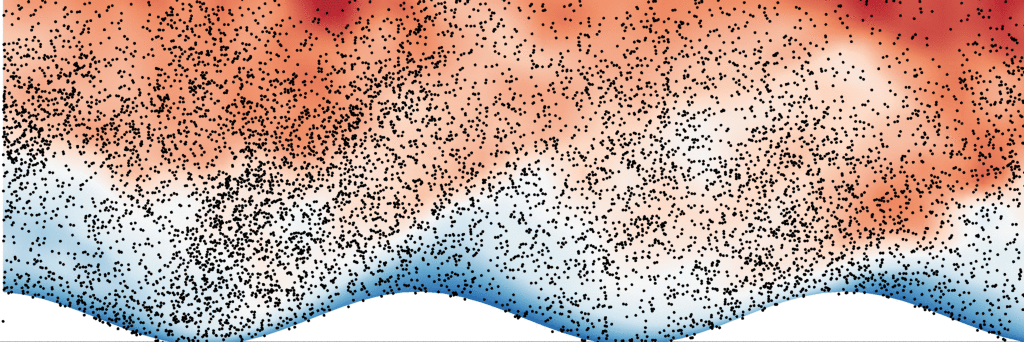
Description
Sea spray droplets and marine aerosols have significant roles in Earth's weather and climate. Attempts to quantify their impacts rely on accurately predicting their production at the ocean surface. Currently, a common method for determining this production is to measure an airborne concentration and inferring a surface flux; however, there remains large uncertainty in sea spray droplet and aerosol generation functions due to lack of insight into the turbulent transport of droplets in the vicinity of surface waves. This project aims to evaluate the influence of waves on the concentration profile of sea spray droplets and to investigate droplet trajectories and dynamics over a range of droplet sizes. Observational data collection is severely limited in this area, but direct numerical simulations (DNS) and large eddy simulations (LES) are proving to be valuable numerical tools for gaining insight into the basic processes associated with wave-turbulence interaction. In addition, we are collaborating with Fabrice Veron's Air-Sea Interaction Laboratory at the University of Delaware, which will provide key experimental data from a wind-wave facility in order to validate our numerical models.
- Richter, D. H., Dempsey, A., & Sullivan, P.P. (2019), Turbulent transport of spray droplets in the vicinity of moving surface waves, Journal of Oceanography, 49, pp 1789-1807
- Richter, D. H. and F. Veron (2016), Ocean Spray: an outsized influence on weather and climate, Physics Today, 69(11), pp 34-39
For more information:
Project Aims
- Assess the accuracy of equilibrium theories used to infer sea surface generation functions for spray and marine aerosols
- Quantify the effects of wave age on sea spray and aerosol generation functions
- Constrain and understand droplet dynamics and feedback in the wave boundary layer